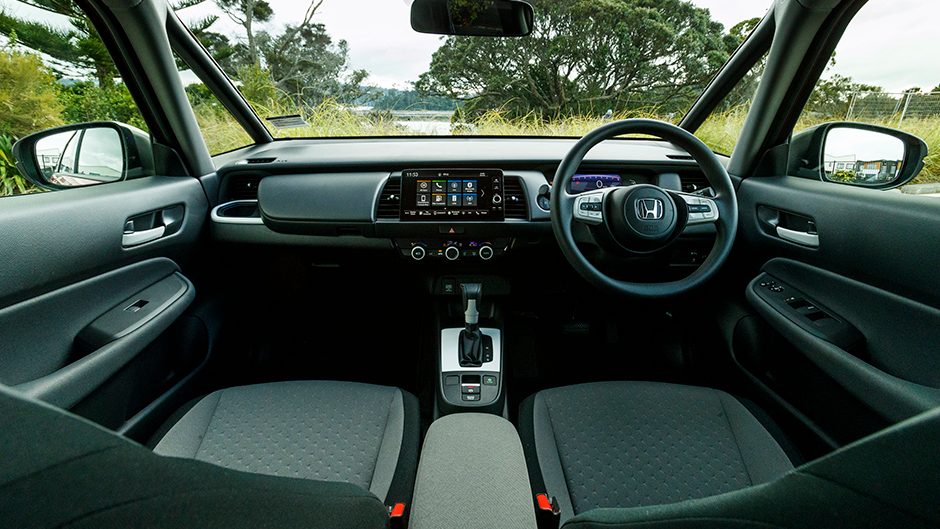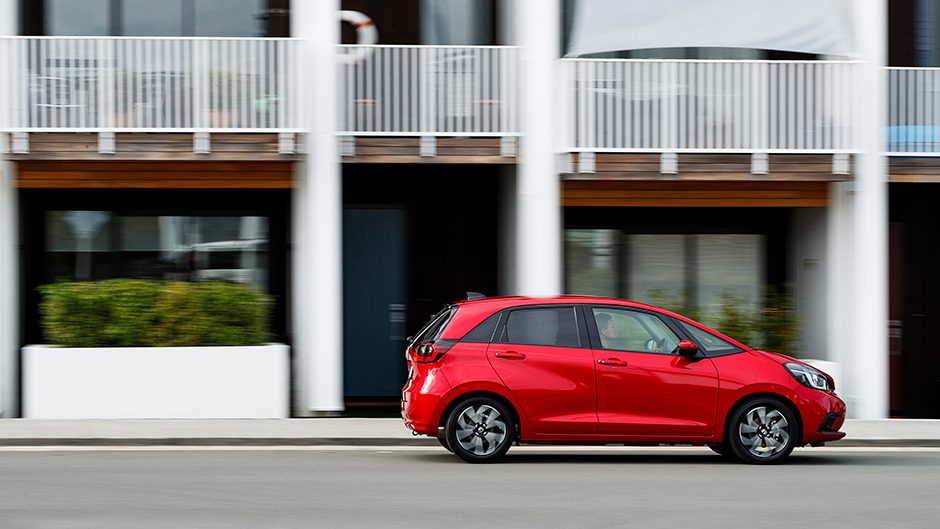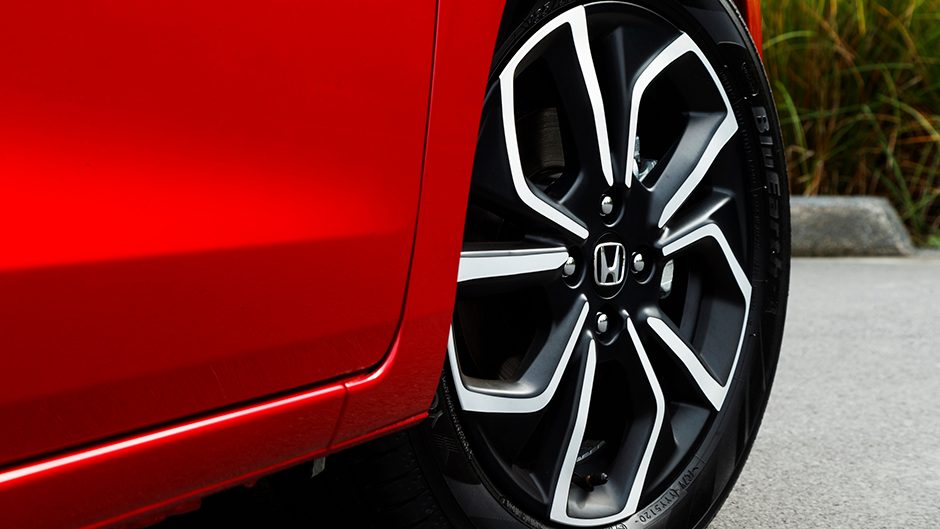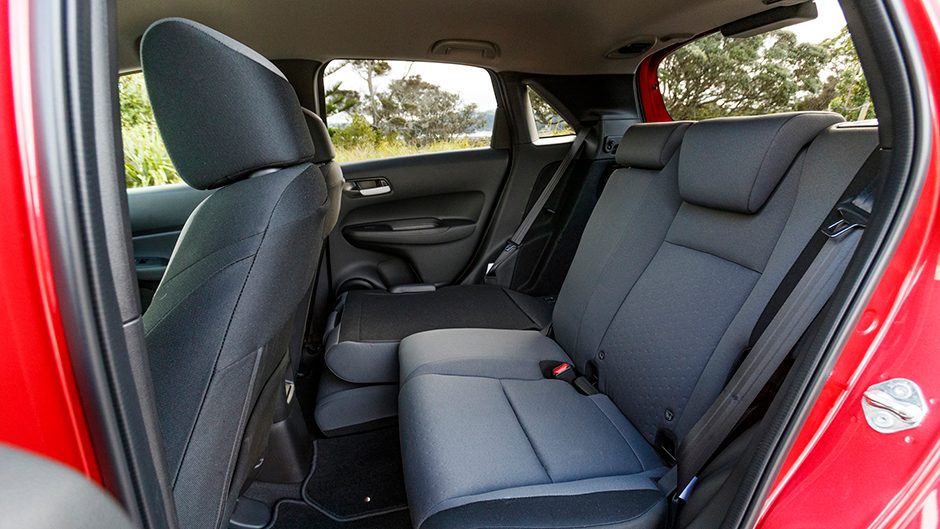2021 Honda Jazz Life review
While the ‘Life’ might be the base of the Jazz range, Honda NZ sees it as a match for its competitors. Are they right?

Not often do we get to sample base models. While the ‘Life’ might be the starting point for the Jazz range, Honda NZ sees it as a match for the midrange offerings from its competitors. Are they right?
We’ve always liked the Jazz around these parts. When the first generation arrived, road test editor, Louisson, was so enamored, he composed a little ditty about it. Like a contemporary pop tune, it consisted of one line repeated over and over. It was annoying then, and still is today but in a strange way, the song remains much the same for the latest Jazz, a space ace remastered for a new decade.
Honda no longer does a base model Jazz in the true sense of the term, with Life kicking off at $28,000. So it’s not the cheapest small car one can buy. They say the Life is a ‘mid-spec’ car though don’t expect a leather bound wheel or auto lights or wipers for instance. But you’ll enjoy the convenience of a smart key with a walk-away locking feature, alloy wheels, an electric park brake, single-zone climate air, seat height adjust and a centre armrest up front.
The most telling omission from the spec list is in the active safety area. Suzuki’s Swift RS is $27,990 and comes with the necessary active safety bits for a five-star safety rating, and also adds sat nav and the ability to haggle on pricing. Over at Toyota, the Yaris GX petrol is $26,990, which includes the on-road costs that add $800 to the price of the Jazz (and Swift for that matter), and while it has an inferior spec list when it comes to convenience features, it too has the full suite of active safety minders.
It’s a pity that these have been omitted from the Life, as it’s the model most likely to be bought by the most vulnerable of Jazz customers; those just starting out behind the wheel and also those coming to the end of their driving career. AEB is a form of insurance for distracted drivers, helping avoid those nose to tails while also mitigating the effects of higher speed crashes. But, like insurance, the fitment of active safety items isn’t compulsory in NZ. Only the $35,000 hybrid Luxe model gains the benefits of Honda’s Safety Sensing technology, which is the model for those who want it all.
Now that our rant is done, we still like the Jazz Life. It has the necessary safety basics like ESP and air bags, and it’s core design ethos makes city driving a cinch. This starts with best-in-class vision thanks to Jazz’s panoramic windscreen, giving you an almost unhindered view forward. The steering is light weighted, and though the Life lacks the quickened rack of the Luxe model, it’s hardly an effort to turn this city car around, with its u-turn dimensions being typically tight.
Life gets the conventional 1.5-litre petrol engine matched to a CVT, a combo that works well here. There’s no labouring uptake with this CVT, and the engine delivers sufficient torque in the 2000-3000rpm region. Get up to 50-ish kays an hour, and the trans trims the engine speed back to 1200rpm to ease fuel use and it happily meanders along. Give it a dash of gas and the CVT quickly shortens its ratio to dial up 2000rpm, where the Jazz will accelerate cleanly for town ramblings. It’s a worthy powertrain in other words.
As to overall fuel use, we averaged out at 6.5L/100km for a mix of typical urban and motorway driving. The difference between this and the top of the line hybrid is the consumption in on-the-way-to-work type of traffic. Where the hybrid recorded just 3.0L/100km in such stop and start congestion, the handy trip computer info in the Life was registering 7.0L/100km for the same 15km commute.
For a city car, the Jazz takes to wilder roads rather well, rounding up the same trail in a more polished manner than the Kona 2.0 we also drove this month. It’s certainly a step up from the last Jazz in terms of its stability yet it still has some spunk about it. It turns diligently, the steering nicely assisted, even with a dash of life, and it holds a line through the bends. There’s some understeer when provoked, but the Agile Handling Assist helps deal with that via some delicate braking intervention. Its simple torsion beam rear end doesn’t wander about or crash over the bumps, and it works rather well in concert with the front to equate to a flowing drive.
Whack the trans into its S position and it will keep the engine in its happier zone above 3000rpm. Beyond 4000 it gets vocal, but that’s where the power lies, and it churns its way through to 6500rpm if you keep the gas primed. Even then, fuel use never gets too crazy, the average only just nudging up into the 8L/100k territory when doing our darnedest.
The Jazz’s trump card has always been its practicality. Of the smalls, it’s the best for the school run. It has more interior space than some cars a size above it, and yet it still nips into the tighter car parks. It’s a small car that can genuinely seat four six-foot adults quite comfortably. A bit like the City before it then.
And the knees of those sitting in the back won’t be touching the front seats either. It’s a space pod, with easy rear entry through big doors. And then you have the Magic Seat, folding either up or down to carry whatever you might have. With the seat flopped forward, it sinks down low to present a remarkable cargo carrying area. The boot itself is well packaged, with a low-set floor and load lip.
While the cabin of the Life is swathed in plastic, it doesn’t present as cheap or harsh to the touch, while the white detailing lightens the decor. The steering wheel might lack a leather wrap but doesn’t feel nasty and we like the minimalist, two-spoke design. The seat has enough adjustment to find a decent driving position, and it’s oh-so-easy to get in and out of.
We’ve mentioned the stellar forward vision, but it’s sorted all around. The wing mirrors probably aren’t as large as they used to be, a common trait of new cars as designers look to reduce drag wherever they can to improve fuel numbers. The reverse camera presents an oddly small image despite the large screen on the dash, while parking manoeuvres are aided by sensors front and rear.
Said touchscreen works ok, though is pretty basic with the nicer features done via smartphone connect with both Apple and Android supported. Annoying how you still have to acknowledge a disclaimer that it’s not Honda’s fault if you get distracted by it while driving. We’d be less distracted if we didn’t have to acknowledge the disclaimer every time. Still, at least setting the ventilation is easy with the smartly integrated knobs.
So, still a top buy in the segment, missing safety bits aside. Its practicalities are hard to beat, it drives well, sips gas and looks interesting, in a somewhat cutesy manner. And if you can’t get to a Honda store, you can even sign up and complete the entire buying process all online now.
Car Details
Model: Honda Jazz Life
Price: $28,000
Engine: 1497cc, IL4, DI, 89kW/145Nm
Drivetrain: CVT, front-wheel drive
Fuel Use: 5.8L/100km
C02 Output: 131g/km
0-100km/h: 9.80sec
Weight: 1113kg
Browse Honda Jazz Life Listings on Trade Me
Image gallery
Also consider







